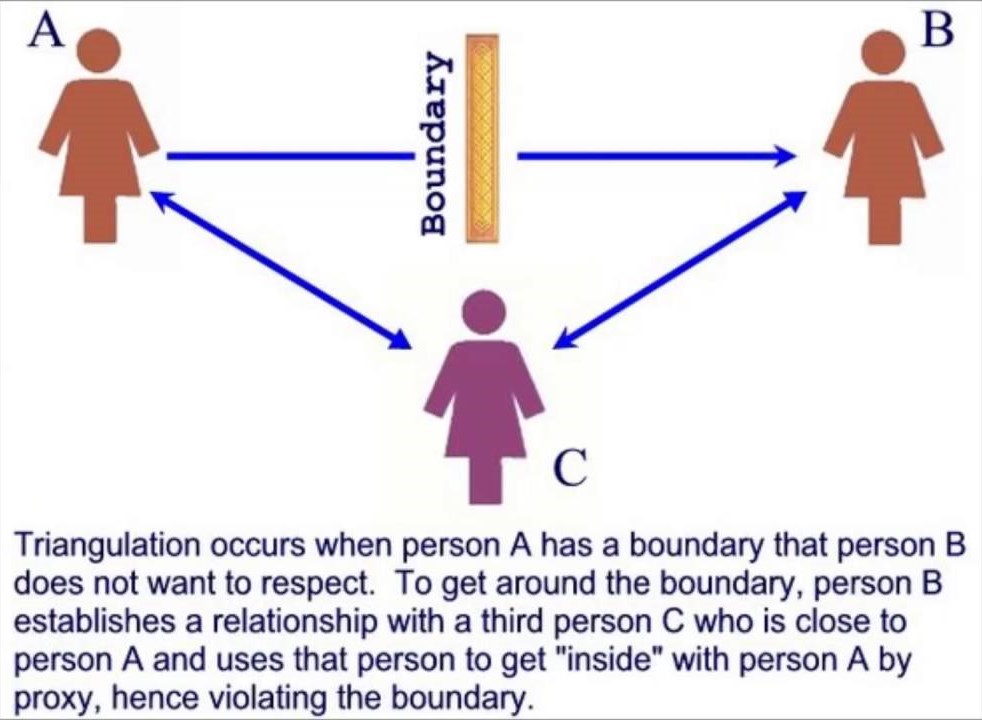October 2022

Meaningful connection is what makes recognition effective.
The CTO
My company recently hired a new Chief Technology Officer after several years of churn trying to find one who both fit and would stick around. He was well spoken and somewhat charming, but seemed a hard and no-nonsense man. Typical for a C-level executive. My initial impression of him was negative, not because of anything overt that he had done, but because of my learned distrust of his type of aggressive hard-chargers who are driven to succeed at all costs, even the health and well-being of those under them. My opinion of him changed for the better during a mandatory round-table meeting with him.
During the meeting, the CTO was very candid and frank about the work environment under his leadership. He stated that there would be some long hours and hard work in certain areas. He also acknowledged that he understood not everyone would be on board with long hours beyond the regular 40-hour week. He said that he would try his best to align both skills and desires to positions available at the company, but that he could not guarantee something for everyone. I admired his honesty and forthrightness. To me, a hard man who is transparent has far more character than one who pretends to be nice, but then deceives or acts against you.
The CTO also stated something that I did not expect from him. He said that employee recognition was important for both team member satisfaction and retention. He then added that he was not good at doing this and pledged to work on it. At first, I believed this to be nothing more than a ploy to placate us into working hard for a few more months. Words without substance, as is the case with many corporate leaders. I was wrong in this case. True to his word, the CTO gave public recognition after that. Even more, he connected that recognition with actual hard work for which team members could be proud.
Faux Recognition
I have seen many “leaders” jump onto the recognition train and start spewing out praise for nonsensical and trivial things. This usually happens right after some leadership workshop and then dies out again just as quickly. As an example, in a past job I had engineered and created a complex system over a period of several months. Working long hours to make sure it was delivered on time and with good quality. I received no recognition for that. However, shortly thereafter I received company-wide recognition for … writing a 1-page test document. I was so irritated that I didn’t even go to the “award ceremony.” They had to come get me at my cubicle and escort me to the meeting. All that did was make me angry. The disingenuousness of it all was highly irritating. Like getting an award just for participating. This new CTO did not do that. He made sure that the recognition matched something very tangible. It worked.
Making it Work
I do not believe the CTO had any genuine empathy or feeling to recognize people. He said as much. However, he understood in a logical manner that recognition is a very necessary element for good team performance. Moreover, he took the time to examine and accurately assess the factors necessary for establishing a working connection between the actions of the employee and recognition thereof. He did not simply throw out random praise, but made an effort to connect that praise to something the employee considered important. This worked in making the employee feel valued and appreciated, proof this can be done even without any empathic connection.
Enter the Narcissist
There are managers in the corporate world who take it as a personal affront when someone other than them receives recognition. They are astute enough not to make an issue of it when their superiors recognize others, but they will go to great lengths to ensure those below them receive none. They will also go to great lengths to cover this up. I had the “pleasure” of working for one for several years. He was in the leadership chain a few levels below the above CTO. A pleasant, energetic and helpful person on the outside, he was a recognized problem solver and fixer. He was the go-to guy when a problem could not be solved. Never mind that he heavily leveraged the skills of others to do so and then assumed the credit. It was his “leadership” that made things work.
I strongly suspect he was also a narcissist. I cannot diagnose, but he displayed many narcissistic traits and behaviors, among them being:
- Withholding important information from employees
- Giving appearance of supporting employees in public, but dismissive behind the scenes
- No interest in hearing employee’s side of things, simply imposing his preferences on them
- Never admitting fault or responsibility; adept at deflecting and diverting blame
- Adept at triangulation; telling employees one thing and his own bosses something different
- Covert aggressive abuse; framing insults as helpful advice with a smile
- Setting up employees for failure; impossible tasks, isolating them from meaningful work
- Infantilization; making employees appear unstable or incompetent to marginalize them
- Amplifying employee failures and minimizing their successes
- Using employee’s emotions against them; finding buttons to push, then claiming they were the problem
- Nothing employees did was ever good enough
- Support him, or pay the price; employees were poorly reviewed or placed on arduous performance improvement plans for saying or doing anything contrary to his desires
The CTO mandated that directors and managers implement processes to recognize subordinate employees for their performance. He made it clear that this was not optional and that if he, a person who struggled with this, could do it, then leaders in his organization could as well. The CTO put his money where his mouth was. I and one of my colleagues received a department wide email recognizing our efforts for working long hours to stabilize one of our systems while simultaneously dealing with some very difficult outside parties who were only making things worse. He stated that he appreciated our efforts to remain professional while the other parties were not. The CTO was not present for any of this work, so he had to dig deep to discover this meaningful connection as part of the recognition. We were not the only people recognized like this. It happened frequently and appeared to always have some sort of meaningful connection. Meaningful connection is what makes recognition effective.
There are managers in the corporate world who take it as a personal affront when someone other than them receives recognition.
I mention this to contrast how my immediate supervisor handled the recognition mandate. My boss made it a point to ask at every meeting whether his subordinates felt that they were receiving adequate recognition for their work. He would throw it out at team meetings and also during individual 1-on-1 meetings. I wonder if anybody ever responded, “No, I feel I have not received recognition for my efforts.” I never heard anyone say that during the team meetings, I never said it during my 1-on-1 meetings with him, and I doubt anybody else did either. Nobody under my boss received recognition either, while he continued to receive accolades for things the team did. However, he could tell the CTO that he conscientiously checked every week whether everyone on his team felt recognized … and received no complaints. I am fairly certain he documented this somehow, maybe even recorded it.
Conversely, our team members received many accolades from the previous manager. All that stopped quietly when the new one arrived several years ago. Note that he never defied the CTO’s mandate, merely dodged it and then manipulated the situation deceptively to make it look like he was complying. All the while, he kept the recognition focused only where he wanted it. On himself.
Will It Ever Stop?
No, it will not. Why not? Because it works in corporate environments. Even in “at will” employment states, corporate leaders wield incredible economic power, especially during down economies and when their employees are in debt. Most American employees are heavily in debt, starting with their student loans and then increasing from there for cars, homes, credit cards and more. They depend on the company for their paycheck-to-paycheck existence and must therefore put up with the nonsense and abuse of corporate leadership. As long as the manager, director or C-level executive doesn’t violate any laws or corporate rules, they are able to do as they please. This gives them surprisingly great latitude for abusing others.
Because narcissists are fundamentally driven by their own self-interest, lack of empathy, and are less constrained by ethical standards, they can cause tremendous harm once in power and can even put organizations they lead at risk.
Delegating failure and assuming credit for success is a tried-and-true tactic for looking good and moving up in large organizations. Many nation’s militaries are notorious for this. It works equally well in corporate America. Those not interested in being managers, along with those not ruthless or astute enough to play the game, are used as fodder for a collective group of often questionable leaders. Narcissists, and their even more dangerous psychopath cousins, tend to “self-nominate” for leadership positions because of their high opinions of themselves. They want to be in charge. Consequently, corporate leaders are disproportionately narcissistic.
Research has shown that narcissistic individuals progress faster up the corporate chain than others, irrespective of the type of organization1. Their narcissism is mistaken for being bold and strong-willed, having a vision, or challenging conventional wisdom. But it is really just a paper tiger of bluff, arrogance, entitlement and (worst of all) impulsivity. Dr. Charles A. O’Reilly, Professor of management at Stanford Graduate School of Business, states, “Because narcissists are fundamentally driven by their own self-interest, lack of empathy, and are less constrained by ethical standards, they can cause tremendous harm once in power and can even put organizations they lead at risk.” Being appointed to a leadership position only reinforces their sense of superiority. They start to believe they really are smarter, better and infallible. Compounding this, power tends to disinhibit people, so it encourages the narcissist leader to indulge in their worst desires.2
The Cost
The greatest danger posed by narcissist corporate leaders is that their bad influence rubs off on the behavior and expectations of those below them. This will eventually shape the culture of the team they manage, and perhaps the entire organization, into their own image. Studies of businesses show that self-serving, unethical behavior at the top cascades through the organization and becomes legitimized, or at least normalized.2
“Once they are in power, narcissists consolidate their position by firing everyone who challenges them,” O’Reilly said. “In their place rise a plague of toadies, opportunists, and enablers equally guided by self-interest and short on scruples. So, you end up with these individualistic cultures with no teamwork and low integrity. We’ve documented this in a bunch of Silicon Valley tech firms.2
The Lesson
Chances are slim that any one reading this can effect changes inside a company to eliminate or guard against narcissistic control and abuse. For one, the people who have the power to effect that change are far more likely to be narcissists themselves. Also, from what I’ve seen of most Human Resources staff, it is doubtful that they will pay any attention to this. They mostly go along to get along and will follow the corporate rules under the guidance of their executive, who has a high likelihood of being a narcissist or worse. As an employee, you may be stuck and continually run the risk of dealing with these kinds of people.
What you can do is identify the signs and let them help guide you as to the only real choice you have … whether to stay, or to go.
What you can do is identify the signs and let them help guide you as to the only real choice you have … whether to stay, or go. This type of “recognition” game is one of those signs; a strong one. Pay close attention who gets recognized for good work in your organization. Then look even more closely at the organizational hierarchy below that person. If it does not trickle down, that is a good indicator the leader may be a narcissist, or at least a selfish person who will not share recognition. Either way, you do not want to work for or with that person. There are many other telltale signs. This is just one. I hope it is of some help to you.
Do not attempt to call out or label the individual you suspect of being a narcissist. It will not help the situation and will probably end up reflecting negatively on you, causing you additional problems. Simply look at the signs and use them to decide whether or not you want to remain in that environment. If you want to fight it, good luck. There are thousands of examples of people attempting this and failing. The few who have succeeded usually find it a pyrrhic victory, having lost much to gain little or nothing. A narcissist will go to any length to win, including destroying you, themselves and the entire world around them. That is rarely a battle worth fighting.
References
1PsyPost: Narcissists Make Their Way to CEO Positions Faster than Their Counterparts, Study Finds; https://www.psypost.org/2021/02/narcissists-make-their-way-to-ceo-positions-faster-than-their-counterparts-study-finds-59517
2Insights by Stanford Business: How Narcissistic Leaders Destroy from Within; https://www.gsb.stanford.edu/insights/how-narcissistic-leaders-destroy-within

















